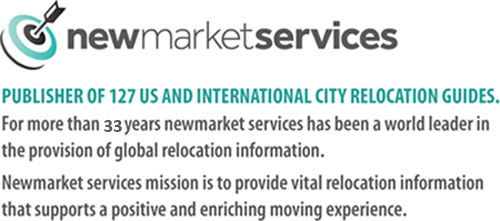The Early Years
When the American colonies were founded in the 1600s the guiding principle for the New England colonies was freedom to practice religions not popular in England; for the southern colonies the aim was agricultural development extending the holdings of British landowners. There were two exceptions. New York, established by Dutch companies, has always a place for trade. The other exception was Pennsylvania, and the town of Philadelphia.
William Penn (1644-1718) arrived in 1681 from a London that had recently burned and was just discovering sanitary plumbing. He wanted Philadelphia to be “a greene Country Towne, which will never be burnt, and always be wholesome.” Founded on Quaker principles of tolerance and harmonious living, Philadelphia had a religious foundation, like its New England neighbors, but welcomed other beliefs and races. Like its southern neighbors, it started with an agricultural economy, but slave auctions were banned early. A community of ex-slaves grew, centered around the Mother Bethel African Methodist Episcopal Church, the cornerstone of the A.M.E. movement. By 1790, there were 300 slaves in Pennsylvania and 7,579 free blacks. By 1860, there were 22,185 free blacks and Philadelphia was an important stop on the Underground Railroad, the secret network that helped slaves escape from southern slave states.
Instead of sprawling mindlessly, streets were laid out on a grid system with five public squares (the present day Washington, Rittenhouse and Franklin Squares, Logan Circle and City Hall). The town was built with no fortifications. Indians were welcome. Even the name of the town demonstrated peace; while most other colonial towns were named for founders or expedition sponsors, Philadelphia is Greek for “City of Brotherly Love.”
New Directions
Of course, when you invite everyone in, there’s the likelihood of disagreement. By 1690, scarcely nine years after the first Quaker Meeting House went up, arguments over the direction of the city had turned into formal ideologies. Philadelphians have been arguing ever since.
Penn had originally envisioned his colony as a “wholesome” farming community, but the port quickly became one of the most important trading spots in America, rivaled only by New York. The rising merchant class wasn’t terribly interested in the simple Quaker lifestyle. Pubs, theaters, circuses, dances and races soon entered the scene. The tolerant attitude attracted many immigrants. British Quakers were followed by German immigrants as early as the 1690s. In the 1800s Irish, Polish and Italian immigrants came in waves, drawn by employment on massive projects like the new turnpike system, the canals and the railroad. Coal mining upstate created more jobs and the coal provided steam power for the factories of the Industrial Revolution that made Philadelphia a major manufacturing center. The Centennial Exhibition of 1876 brought 100,000 people to Fairmount Park to see the wonders of industrialism.
Most Famous Resident
In 1723, Benjamin Franklin arrived from Boston. He eventually started his own publishing house, producing several newspapers and an annual farm guide, Poor Richard’s Almanac. In his spare time, he invented the Franklin stove, the glass harmonium and bifocals. He helped write the Declaration of Independence. He was a founding member of the University of Pennsylvania, Pennsylvania Hospital, the first public library, a fire insurance company, the Post Office and the Constitutional Congress. His 1751 book, Experiments and Observations in Electricity, was considered the most important scientific work in the world in its time. His name is on everything here.
Political Roots
This is where the Congress met and founded the nation on July 4th, 1776.
The city is filled with reminders of the colonial period. Fairmount Park is dotted with colonial homes that were moved there as museums. Elfreth’s Alley is the oldest continually occupied neighborhood in the country. Old Swede’s Church offers a perfect example of the “public” architecture typical at the country’s founding. Delegates to Congress were astounded at the wealth and beauty they saw here. Because of the active seaport, food and fabrics from the Indies and China were readily available, even with the difficulty of getting past British warships. There were some of the finest examples of colonial silversmith, textile work and furniture in the homes.
Turn of the Century
By the 19th century, the excitement was over. In 1800, the nation’s capital moved to Washington, DC. New York began to overshadow Philadelphia as a financial and cultural center.
War Signals A New Age
By the end of World War II, things were looking up again. Though the heavy industries have moved out, the economy is robust. Always known for its hospitals, medical schools and research facilities, Philadelphia is leading bioengineering research and development. The city has become a popular film location.
Philadelphia has achieved what older citizens had thought impossible: New Yorkers come for a visit and decide to look for a house.
This is possibly the best time to be visiting since 1776, when Congressional delegates were bowled over by the quality and comfort of this city.
$market = “PHL" ;
global $market ;
[/insert_php]
[insert_php]
$market = “PHL" ;
[/insert_php]
